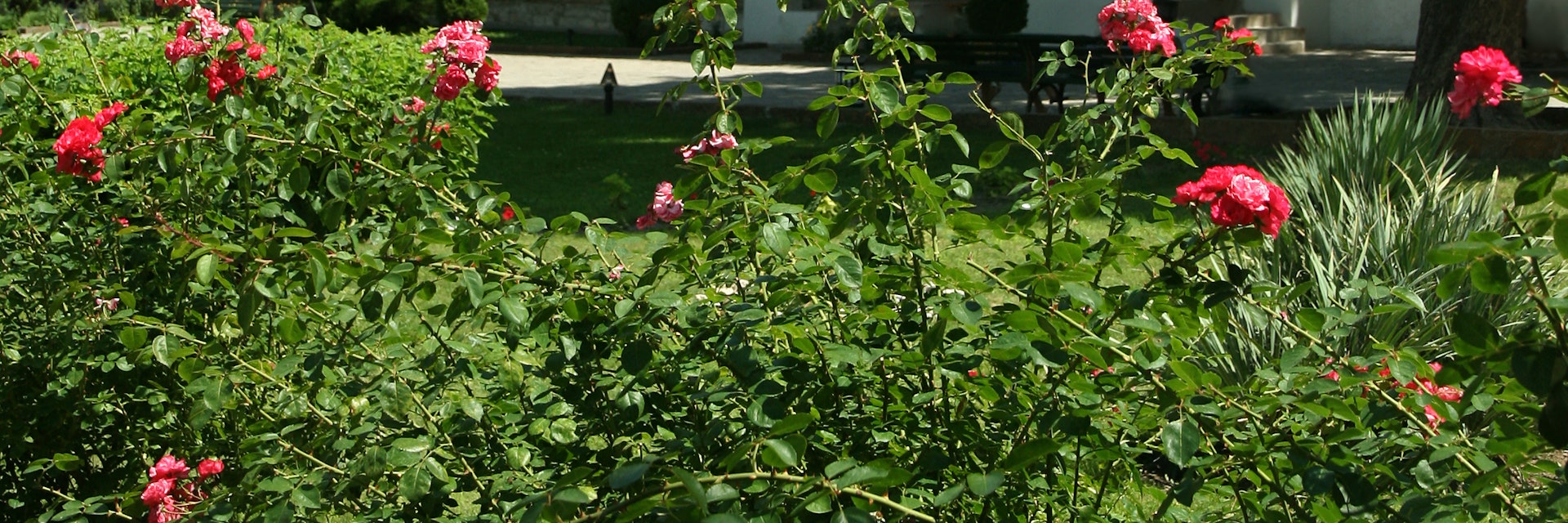When she was busy ordering the mass destruction of Bakhchysaray's mosques in the 18th and early 19th centuries, Catherine the Great spared the Khans' Palace. Her decision was reportedly based on the building being 'romantic', and it is sweet. While it lacks the imposing grandeur of Islamic structures in, say, Istanbul, this is a major landmark of Crimean culture and history. Erected in the 16th century under the direction of Persian, Ottoman and Italian architects, it was rebuilt a few times, but the structure still resembles the original.
Passing through the back of the finely carved, Venetian Renaissance Demir Qapi Portal (also called Portal Alevizo after its Italian designer, who also authored parts of Moscow's Kremlin), you enter the west wing and the dimly lit Divan Hall. This was the seat of government, where the khan and his nobles discussed laws and wars.
Through the hall lies the inner courtyard, containing two fountains. With its white marble ornately inscribed with gold leaf, the Golden Fountain (1733) is probably the more beautiful. However, the neighbouring Fountain of Tears (1764) is more famous, thanks to Alexander Pushkin. It's tradition that two roses – one red for love and one yellow for chagrin – are placed atop the fountain; Pushkin was the first to do this.
Behind the palace is the only surviving harem of the four that were traditionally attached to the palace and belonged to the khans' wives. Across the yard you can see the Falcon Tower.
The Khans' Cemetery is beside the mosque, and way back in the grounds' southeast corner is the mausoleum of Dilara Bikez, who may or may not be the Polish beauty who bewitched the khan.


